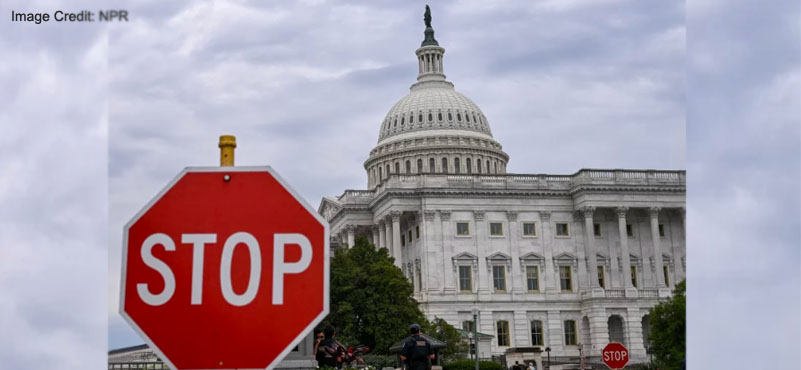Given the central role of the U.S. in global growth, prolonged shutdowns can reverberate internationally, depressing investor sentiment, disrupting trade, and raising fiscal stability concerns. Global equities, particularly in emerging markets, are sensitive to signs of U.S. instability.
On October 6, 2025, the Senate once again rejected both Democratic and Republican proposals to fund the government and end the ongoing shutdown. The Democratic bill fell short with a 45–55 vote, while the Republican proposal failed 52–42, both well below the 60-vote threshold required for passage.
Senate Republicans have been attempting to secure Democratic support for a House-passed measure that would keep the government funded until November 21. However, Democratic leaders remain firm that any funding package must also extend health insurance tax credits. With neither side yielding, both chambers of Congress remain deadlocked.
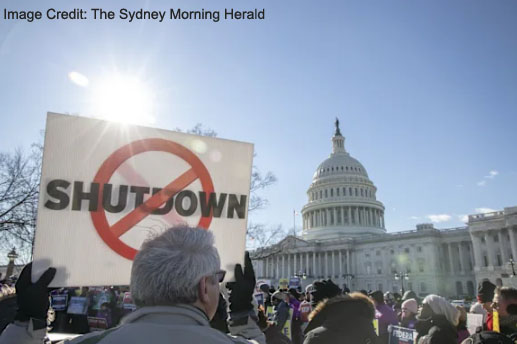 Compounding the stalemate, former President Trump hinted at a potential deal with Democrats over health subsidies but later withdrew his offer, insisting that Democrats must first agree to end the shutdown. House Speaker Mike Johnson cancelled plans for the chamber to reconvene in Washington, asserting on Monday that “there’s nothing for the House to negotiate” and that it “has already done its job.” Meanwhile, Senate Minority Leader Chuck Schumer argued that resolving the shutdown requires a meeting between congressional leaders and the President.
Compounding the stalemate, former President Trump hinted at a potential deal with Democrats over health subsidies but later withdrew his offer, insisting that Democrats must first agree to end the shutdown. House Speaker Mike Johnson cancelled plans for the chamber to reconvene in Washington, asserting on Monday that “there’s nothing for the House to negotiate” and that it “has already done its job.” Meanwhile, Senate Minority Leader Chuck Schumer argued that resolving the shutdown requires a meeting between congressional leaders and the President.
After the votes, Schumer reiterated, “After five failed votes, Republicans should understand that they cannot proceed unless we reach a bipartisan agreement to address the healthcare crisis.” Democrats have refused to support any funding measure that excludes key healthcare provisions, particularly the extension of premium tax credits for those covered under the Affordable Care Act (ACA). Trump, however, signalled that he might be open to negotiating with Democrats on the ACA subsidies, while also repeating the conservative claim that “billions and billions” of dollars are being squandered.
Given the entrenched positions on both sides, it is vital to examine the broader impact and implications of the ongoing U.S. government shutdown.
Semantics of Growth- Short-Term Macroeconomic Impact
A U.S. government shutdown exerts immediate and widespread pressure on the domestic economy, particularly in its short-term effects. While this would mark the 15th federal shutdown since 1981, the current situation is uniquely troubling due to the almost conspicuous absence of substantive negotiations in Congress. Deep partisan polarization and entrenched political gridlock raise the probability of a drawn-out impasse, intensifying the economic fallout.
In the early days of a shutdown, approximately 750,000 federal employees are either furloughed or working without pay. This sharply reduces household incomes and depresses consumer spending, estimated to decline by about $400 million per day. Such a contract produces a clear and measurable drag on Gross Domestic Product (GDP).
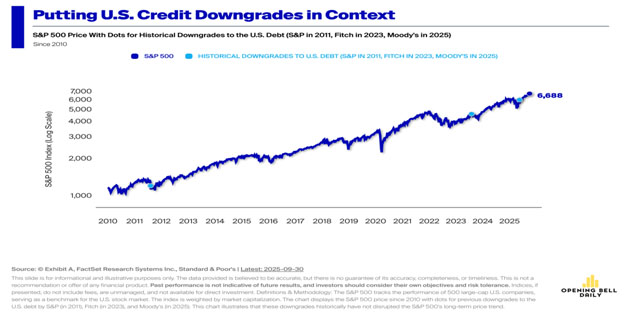
The freeze in federal operations leads to delays in grants, contracts, and procurement activities, which cascades into local governments and private sector vendors dependent on federal funding. The shock is particularly concentrated in sectors like healthcare, education, environmental protection, infrastructure maintenance, and retirement services. Should the shutdown last beyond several weeks, economists project losses of 0.1% to 0.3% of GDP per week, potentially amounting to billions in reduced quarterly output.
New concerns on the government shutdown and old worries about currency debasement and fiscal deficits have pushed the “debasement trade” to the center stage.
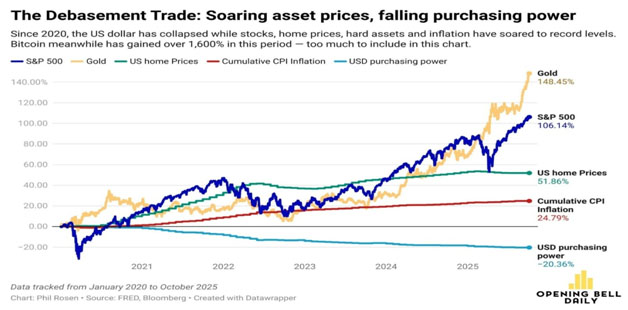
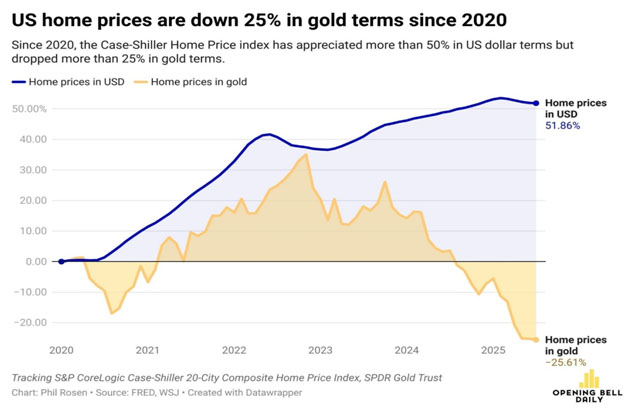
Phonology of Transition- Employment Disruption and Sectoral Fallout
The most visible labor market shock is borne by the 2+ million civilian federal workers, many of whom face furloughs or paycheck delays. However, the ripple effects extend well beyond direct government payrolls, causing project stoppage, cash flow problems, or layoffs. Defense, construction, IT services, and consulting firms that rely on federal contracts may face project halts, cash flow disruptions, and eventual layoffs.
The charts below illustrate two decades of search volume for the terms “part-time,” “second job,” “job security,” and “new job.”
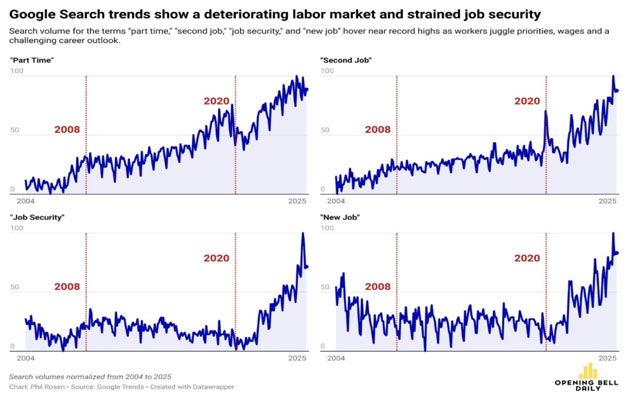
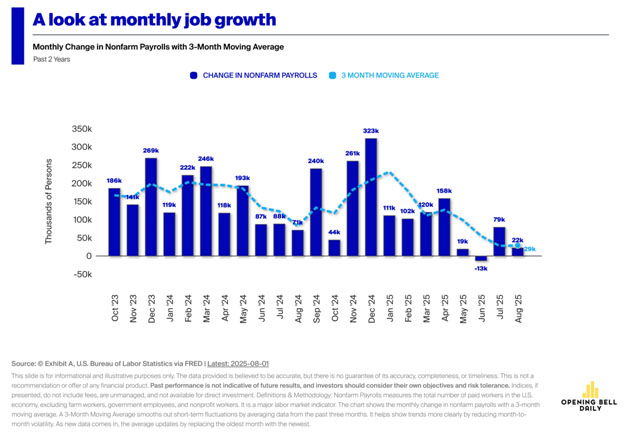
Federally Funded Industries, e.g., healthcare (especially veterans’ services and Medicaid administration), education programs, transportation infrastructure, and national security operations face operational risks. Tourism hotspots will take a hit with locations dependent on access to federal properties such as national parks, monuments, and museums typically experience steep declines in visitor traffic, damaging local hospitality and retail businesses. Small businesses near government offices will face sudden revenue losses, hiring freezes, and cutbacks in operating hours when their customer base is heavily composed of federal workers or agencies.
Daily Life Disruption- Lexicon of Change
For everyday Americans, the practical consequences of a government shutdown are both visible and deeply inconvenient. Vital administrative processes such as passport and visa processing, FHA mortgage approvals, and small business loan disbursements are slowed or suspended altogether.
National parks, monuments, and museums often close or run with minimal staffing, affecting tourism and local economies.
Social Program Gaps are imminent. While entitlement programs like Social Security and Medicare remain funded, assistance programs such as WIC, SNAP, and public housing support may face interruptions or administrative backlogs. Travel bottlenecks will lead to reduced staffing from unpaid TSA agents, and air traffic controllers can cause flight delays and security congestion.
Financial Strain will be exacerbated for households. Families reliant on federal paychecks frequently postpone paying bills or cut spending, deepening localized economic contractions.
Implications for Wall Street and Investor Confidence
Financial markets historically respond negatively to shutdowns, viewing them as indicators of governmental dysfunction. Historically, shutdowns have caused dips in U.S. stock futures, a weakening of the dollar, and a flight to safe-haven assets like gold and U.S. Treasuries. Recovery patterns reveal that markets often rebound after reopening, but prolonged shutdowns can erode investor confidence, especially if they overlap with debt-ceiling debates or fiscal uncertainty. Extended political stalemates may heighten U.S. sovereign credit risk, elevate bond volatility, and increase borrowing costs for the federal government, thereby causing systemic risks.
Global Ramifications
Given the central role of the U.S. in global growth, prolonged shutdowns can reverberate internationally, depressing investor sentiment, disrupting trade, and raising fiscal stability concerns. Global equities, particularly in emerging markets, are sensitive to signs of U.S. instability.
Export and import flows may slow if agencies like Customs and Border Protection face operational backlogs. A shutdown coinciding with debt ceiling brinkmanship could raise doubts about U.S. fiscal credibility, potentially triggering broader financial market volatility.
Mitigation Strategies Across the Development Spectrum
Government Action
To be sure, the current crisis is not without warning signs. But longstanding political polarization and an increasingly dysfunctional budget process have made such fiscal showdowns more frequent. With the consequences now spilling into the real economy, a coordinated response is urgently required.
Short-term funding could be passed so that continuing resolutions could sustain essential functions while budget negotiations proceed. To safeguard critical services, it is important to ensure TSA, military operations, and key social safety nets remain operational under emergency protocols. Retroactive Pay Legislation, e.g., guarantee back pay for furloughed workers, as done in previous shutdowns, is necessary to mitigate financial damage.
Business Strategies
Interim financial support by way of temporary financial relief, such as flexible loan repayment terms, to employees or clients impacted, is necessary. Revenue diversification requires reduced dependency on federal contracts to strengthen resilience in the face of political instability. There must be an accent on Policy Advocacy by engaging policymakers, including industry associations and business leaders, for more predictable, responsible fiscal governance.
The Way Ahead: The Discourse of Development
Let us face the facts squarely. The ominous warning signs of a self-inflicted crisis have been evident for months, starkly manifested in political fragmentation, fractured Congress, repeated failures to pass timely appropriations bills, deteriorating legislative cooperation, and an increasingly toxic political climate. Rather than offering vague foreign policy promises or lofty geopolitical ambitions, political leadership, particularly from figures like President Trump, should launch a direct assault on domestic fiscal dysfunction. As the saying goes, charity begins at home.
Unlike the immutable laws of thermodynamics, a government shutdown is marked by continual flux — shifting alliances, evolving priorities, and growing uncertainty. Yet, it takes no special foresight to recognize that the foremost task must be to stabilize federal operations, restore fiscal discipline, and protect the U.S. economy from politically engineered disruptions. The stakes are immense: millions of American families — and indeed the global economy — depend on it. Whether this will come to pass remains uncertain. We watch warily.
ABOUT THE AUTHOR
 Dr. Manoranjan Sharma is Chief Economist, Infomerics, India. With a brilliant academic record, he has over 250 publications and six books. His views have been cited in the Associated Press, New York; Dow Jones, New York; International Herald Tribune, New York; Wall Street Journal, New York.
Dr. Manoranjan Sharma is Chief Economist, Infomerics, India. With a brilliant academic record, he has over 250 publications and six books. His views have been cited in the Associated Press, New York; Dow Jones, New York; International Herald Tribune, New York; Wall Street Journal, New York.

